MDP (Passive Destruction Machine)
Electronic sculpture / multichannel projection. Metal / fabric / multichannel projections. multichannel projections controlled by joystick.
Programming: Esteban de la Monja, Nicolas Gravel.
Text: Theodore Muixi.
MDP break the passivity with which the viewer is confronted with a video installation by an operation that appears daily: the use of handheld devices and over-exploitation of the audiovisual as a day of interaction.
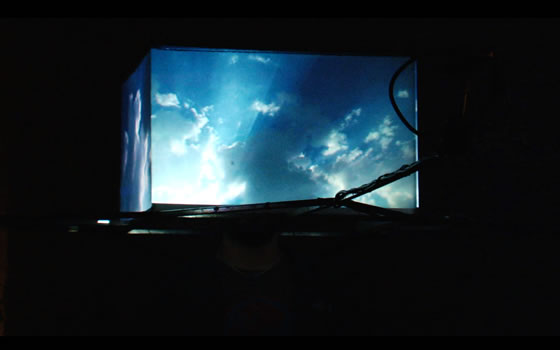
Nicolás Spencer what he does in this piece takes place in an area that borders between pure art and audiovisual research. Consider using the viewer into a cumbersome laboratory to explore the limits of perception and the use of devices.
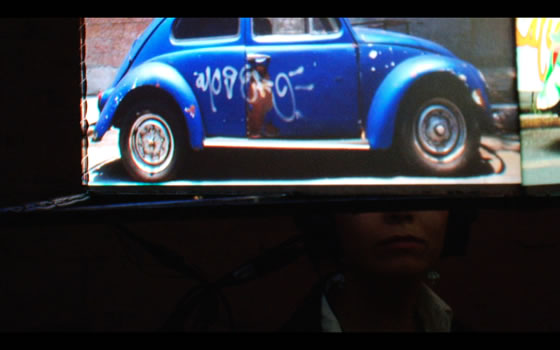
VIDEO
MDP is described in two fundamental principles that I believe.
The device.
There is some violence implicit in the ostentatiousness and the way it displays both the video and the sound of this piece. The way it is mounted projection system on the user's head, kept in some way locked in a medium that could be daily in its most basic conception portability. But this subject portability and, in some way assaulted. The piece refers to the panopticon (Michel Foucault) and even more planned for construction at the Jeremy Bentham. Thus MDPnos suggest that there is some rapprochement between the device and the positioning of the user or viewer as an observer "privileged" in what could be a prison, hospice, or rehabilitation centers.

The constituent elements of the work can send us to certain torture devices rather than portable image projection, thus questioning the use of the latter in daily use: Who is really the user of the devices?.
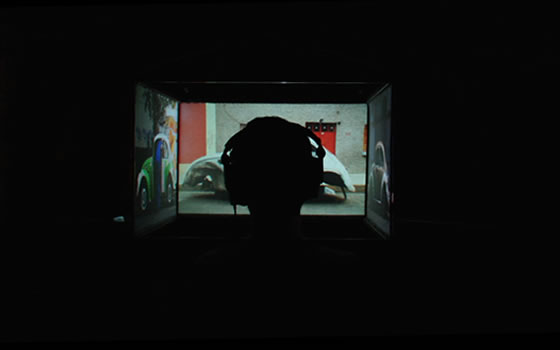
Preamble to the instructions for winding the watch (Julio Cortázar)
Think about this: when they give you a clock giving you a little hell flowers, a wreath of roses, a dungeon of air. Not only giving you the watch, happy birthday and hope it will last because it is a good brand, Swiss, seventeen rubies; not just giving you this minute stonecutter which will bind to the wrist and walk along with you. They give you "do not know, how terrible is that they do not know," giving you a new fragile and precarious piece of yourself, something that is yours but not your body, to be tied to your body like your belt as a desperate little arm hanging from your wrist. They give you the need to wind it every day, the obligation to wind to keep it a watch, they give you the obsession of looking at the exact time in the windows of stores in the announcement on the radio, the service phone. They give you the fear of losing it, you steal it, that you fall down and break. They give you their brand, and security that is a better brand than the others, give you the impulse to compare your clock with other clocks. Not giving you a watch, you are the gift, to you yourself for the birthday of the clock. "
Perception.
The images that are dumped on this device represent what the artist believes that "is" the City of Mexico. A conception of the city that is accessed through the game of a series of discrete images, some concrete, some abstract, of what could be the possible future memory of a "transient city, a tourist, the resident transient Mexico City.
What is the memory many times, beyond being built through areas considered "iconic" of a city, are in the interstices of these, the spaces inhabited by the gaze of passers-by of their cities. Images "iconic" and interstitial deploy multi-projected at high speed, leaving an impression that, far from being a "postcard" of the city, is an organized collection of textures, colors and situations.
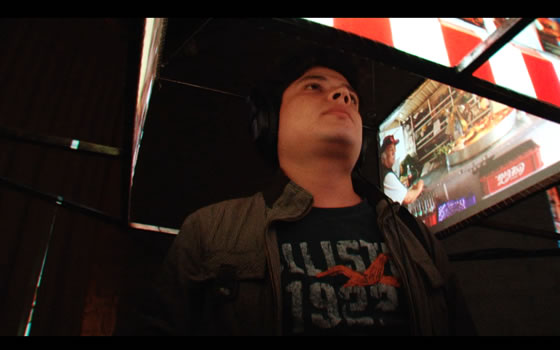
The pursuit of this experience through the piece, has its foundations in theories and practices related to the Gestalt and even more in the Gestalt-video, creating a sensory space in which all form a picture or video is much more mental representative than the sum of its constituent parts formed by discrete units.
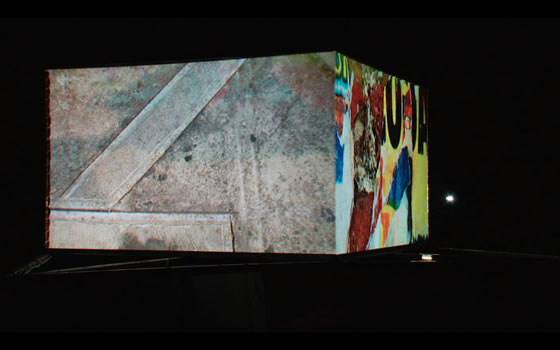
The MDP-user viewer is assumed imaginative and thinking, and not as a passive consumer of images. MDP works under the assumption that it is the thinking man who built his experience not as a mere reflection, but through a "sensitive knowledge" transcending in a unique and personal.